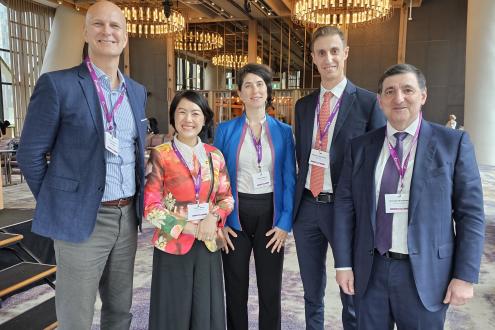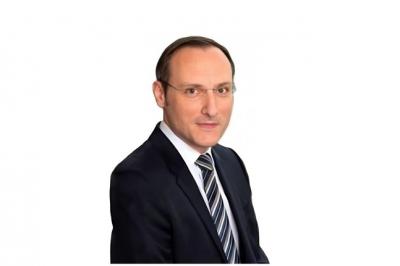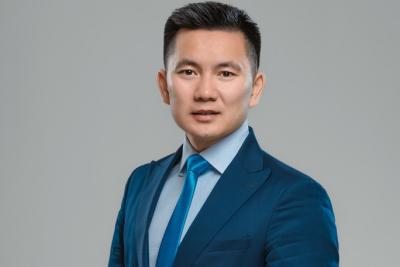Impact Investing & Microfinance – Aligning Mission and Return for Asia’s Private Clients

Nov 16, 2023
The rather unique and fascinating world of microfinance is a relatively new topic for a Hubbis live conference, but it is logical to cover this as part of the expanding universe of ESG and impact investing. Accordingly, the Singapore Investment Forum on November 1 included a detailed discussion amongst several experts on how to deliver the best of both worlds to micro-entrepreneurs and to private client investors in Asia. Sustainability is a key concern for many of the wealthier private clients, especially perhaps family offices that have the scale and are immune from the daily financial challenges. But perhaps their founders recall times when they were struggling financially and often want to give back to society in general when they are in such a privileged position of financial strength. This inclination towards philanthropy can, some might suggest, be neatly aligned with financial returns, thus satisfying both the investors and the end-recipients of the funding, in many cases micro-SMEs trying to run their own small businesses to keep themselves and their families afloat. The interest in such microfinance can therefore also address the concerns of the next and younger generations, many of whom have enjoyed the wealth of their parents or grandparents, and who want to find new avenues for social impact as well as financial returns. The concept of profitability aligned with philanthropy and social impact was therefore central to the discussion amongst specialists who know that mobilising private capital towards private endeavour is key to building communities and countries. That is the ‘why’ and the panel also discussed the ‘how’, casting their eye over strategic investment in microfinance and co-investments as well. They acknowledged that specific knowledge of markets, communities and the needs and tendencies of micro-entrepreneurs are all central to ensuring the right clients obtain the right funds and both parties are subject to the right structuring.
These are some of the questions the panel addressed:
- Impact Investment – how would you explain this opportunity? How do you engage with this opportunity?
- Financial Returns with Social Impact – what does this mean in reality?
- Impact Investment – trends and developments in Asia and Emerging Europe. Is the market growing?
- How can this provide diversification to portfolios?
- What structures are needed to gain investment exposure to high-yield, differentiated ‘real economy’ opportunities?
- What is the contribution to clients’ investment portfolios of microfinance investments, which have zero correlation to equity-markets?
- Due Diligence and Impact Measurement – what must you consider?
Chair
George Boubouras
Executive Director and Head of Research
K2 Asset Management
Panel Members
Diana Watson
Investment Manager
Tsao Family Office
Thomas Riber Knudsen
Director, ESG & Impact Investing
Rumah Group
Sylvie Khau
Managing Partner
Mastery Holdings
Michele Mattioda
Director
Mikro Kapital
The discussion opened with the panel members explaining more about themselves and their missions, and it was immediately clear that these were genuinely committed speakers who are intent on regularly putting their funds behind their assertions and beliefs.
Genuine intent and understanding
One of the family offices shared insights into their path from traditional philanthropy concepts to a more nuanced approach to impact investing. They emphasised the importance of direct intentionality in impact investing, differentiating it from much less targeted philanthropy.
For this family office, the shift towards impact investing is rooted in the belief that positive and lasting change can be achieved by directing capital towards businesses and initiatives that align with their values. Their current focus areas include healthcare, climate, energy transition, and education, which they identified as critical sectors requiring capital.
Aligning purpose and returns
Another family office, which pronounced their mantra of ‘Investing with Purpose’, highlighted their commitment to a dual mandate of financial returns and social impact. The speaker articulated their approach, which spans a spectrum from ESG-integrated investments to opportunities for ‘deep-impact’, which refers not to some Sci-Fi movie, but to the real-world impact of new funds on local economies and communities. They said they can navigate a course between obtaining financial returns and achieving societal and environmental objectives.
A third speaker, also from a family office, highlighted their own focus on SE Asia and particularly related to the oceans and the ‘build’ sector, following the family’s history in property. They confirmed that theirs was both a social impact and also a financial mission, with the two threads comfortably intertwined in their own minds.
The panel also featured a participant whose firm delivers microfinance in Central Asia. They explained how their own commercially viable, profit-driven model was central to their ongoing commitment to impact investing.
Good experiences result in the recycling of funds
As returns come through consistently and at appealing levels, their own investors – many of which are family offices dotted around the globe – are receptive to recycling funds again and again into these areas. They explained that although returns might appear relatively high, investors need to be enticed to this sector of funding, and they reported that the banks themselves would not do this, as it is far too time consuming and labour intensive.
Teaming up for greater impact
The panel looked in some depth at the concept of family offices and institutions teaming up for co-investments to spread their risk and to enjoy greater safety in numbers. Family offices investing alongside major pension funds offers reassurance and additional due diligence capacity, and seemingly, stamps of approval for certain deals and structures. This helps greatly, assuming the other vital elements are in place – namely a clear investment strategy, clear intentionality (the impact), and a view on the value of the investment as part of ESG, especially sustainability.
A panellist explained that their investments encompass both funds and direct investing. Fund investments are preferable in sectors where they lack expertise, such as vital areas in energy and healthcare.
Joining forces for extra reach and confidence
Co-investing directly alongside other investors and family offices in areas that they know more about is also a key option in the right circumstances. In certain situations, they can also align with Development Finance Institutions (DFIs) to access certain important projects.
One guest reported they had worked with some DFIs in the purchase of a majority stake in a bank in Tajikistan, which itself will then play a role in bolstering the local economy.
The potential scale of impact investing is truly vast
They agreed that there is a vast sum of money already targeting ESG investments globally, and that number is growing. A guest explained that this is in the tens of trillions of dollars already, at least in terms of intention if not yet in reality. They observed that alignment with DFIs from Asia, Central Asia, Europe and elsewhere adds significant firepower, as those entities often have dedicated specialists for due diligence and great expertise in the local and regional economies and cultures.
The experts also acknowledged the need for greater standardisation of information and also of frameworks to help the investor community assess potneital transactions, not just through the financial lens, but also through the lens of impact and practical matters. ct investing returns.
Non-correlated returns
Investments in microfinance and other key areas of potential impact are often highly uncorrelated to mainstream financial investments and even to many private sector and alternative investments. The lack of liquidity is an issue but is usually very manageable for larger investors which allocate a segregated portion of their (often very significant) portfolios to these areas.
Moreover, illiquidity palls into insignificance if the impact and the returns both pan out nicely over time, so much so that many such investments are at maturity recycled back into other impact opportunities.






